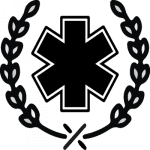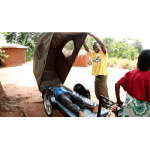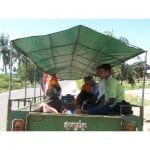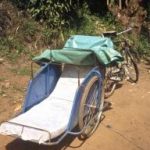eRanger Ambulance
eRanger
The eRanger Ambulance transports patients to and from healthcare centers.
The eRanger Ambulance is powered by the JH 200L with a sidecar combination that acts as an ambulance for transporting of patients and healthcare resources to and from local health centers and hospitals. It can carry up to 3 people: the patient, outreach medical worker, and the driver. On the sidecar part of the ambulance, a removable stretcher is incorporated with a hinged section to allow easy access to the stretcher’s flat platform. The stretcher can be configured in two ways: flat position or suspended chair. In both positions, there is a storage space at the rear of the sidecar. For privacy and safety reasons, the ambulance also incorporates a canopy that can cover the whole stretcher. The rear carrier box of the motorcycle is large enough to fit medical kits and a fire extinguisher.
Countries: Afghanistan, Angola, Cameroon, Caribbean, Chad, Democratic Republic of Congo, Ethiopia, Ghana, Guinea, Haiti, Kenya, Liberia, Malawi, Mali, Mozambique, Senegal, Sierra Leone, South Africa, Sudan, Tanzania, Uganda, Zambia, Zimbabwe
eRanger Ambulances are deployed with the help of NGOs and governments, such as UNICEF, USAID and JHPIEGO.
$5,900 USD directly from manufacturing factory (shipping not included). Interview with manufacturer
Price charged to patients varies largely by region and NGO using product.
- Traditional ambulances
- Namibia Bicycle Ambulance
- Zambulance
- Coop Africa
Trained drivers






